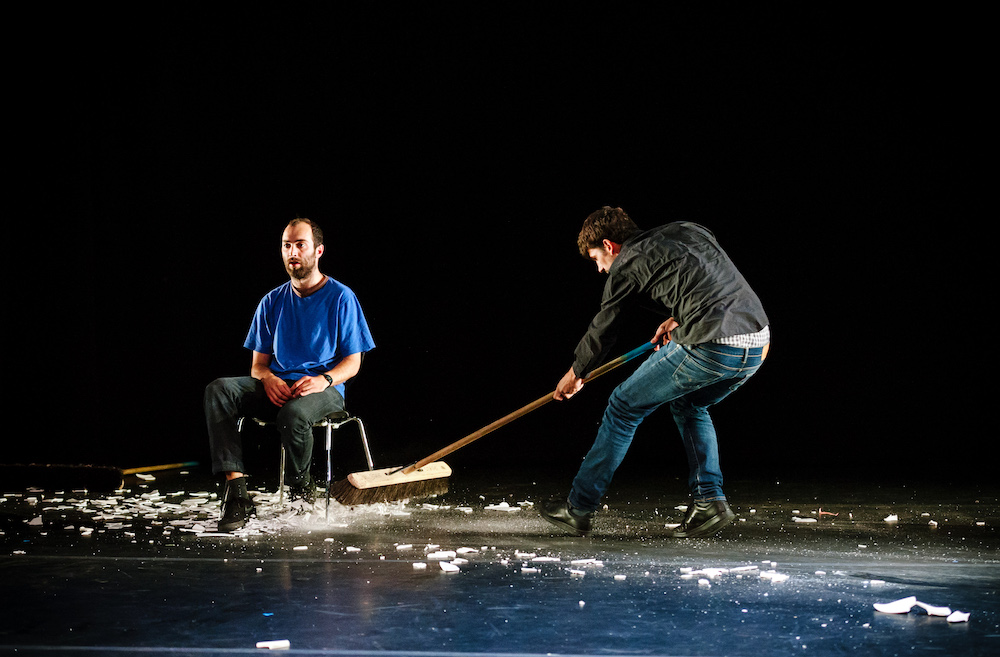English evolutionary biologist Richard Dawkins recently Tweeted, “A quartet knowing not a word of each other’s languages can sit down together and make beautiful music. How come musical notation is so much more universal than language?” He soon drew ire from commenters pointing out that the four hypothetical quartet members have simply been trained in the traditions of Western music notation. Whether or not you consider it a work of genius, the score to a Beethoven String Quartet is no more universal – in fact, probably less so – than the instructions to a piece of flat pack IKEA furniture.
 Palmyra. Photo © Alex Brenner
Palmyra. Photo © Alex Brenner
It’s the assumption of Western cultural universality – and therefore superiority – that Bertrand Lesca and Nasi Voutsas attack in their two-hander Palmyra, which has been touring the world since its wild success at the 2017 Edinburgh Fringe. Not long after ISIS was removed from the city of Palmyra – having destroyed the temples and looted the tombs of what was one of the best preserved ancient cities in the world – Valery Gergiev conducted the Mariinsky Orchestra on the amphitheatre where ISIS staged its executions. It was this moment that inspired Lesca and Voutsas’ Palmyra, which is now playing at AC Arts as part of the Adelaide Festival.
Two chairs, each with a white china plate next to it, are the only props on an otherwise empty stage. Voutsas, arms upheld and motionless like a statue, turns his head and realises that one of the plates is smashed. What follows is a comic, but increasingly tense, back and forth that sees the audience swept up in the escalating hostilities. The fourth wall lies in ruin long before the stage is strewn with dust and broken crockery.
To a soundtrack ranging from Handel’s Lascia ch’io pianga from Rinaldo to the Ella Fitzgerald and Louis Armstrong version of Let’s Call the Whole Thing Off, Voutsas and Lesca play off each other and the audience with dry humour and a confronting violence. “I’m telling you for the last time, no!” insists an audience member, Margaret, who is suddenly caught between the pair, admirably standing her ground despite the exhortations from both players, who appeal to the audience to try and force her hand.
While the metaphor at the heart of Palmyra is rather blunt (and the connection is only made directly in the work’s title), Voutsas and Lesca execute it so deftly that the audience becomes complicit before they know it, awash in shifting perceptions, posturing and gaslighting as well as passive – and active – aggression. There were a few moments where the action dragged on the night I saw it, but there were also some exquisitely taut, awkward – almost painful – pauses, and no doubt these rhythms will vary with different audiences.
Humorous and terrifying, Palmyra doesn’t so much invite the audience to challenge their perceptions about cultural superiority and complicity as it does force them to acknowledge it – at the business end of a claw hammer.
Palmyra is at AC Arts as part of Adelaide Festival until March 5











Comments
Log in to join the conversation.